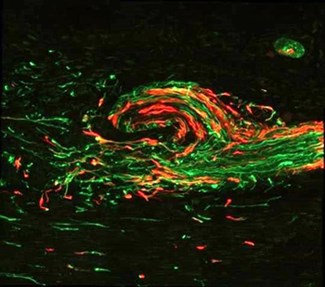How the fingertip is teaching scientists about tissue repair
Summary:
A new SickKids-led study suggests that nerve-derived cells may play a key role in regulating tissue repair and regeneration in the distal tip and throughout the body.
When a newt loses a limb due to injury, it simply grows back. Mammals are not as fortunate as evolution has left us without this useful regenerative capacity. One exception however, is the fingertip which regenerates from the distal tip (farthest end of finger) to the nailbed in both mice and humans. How this occurs has been largely unknown.

A new SickKids-led study suggests that nerve-derived cells may play a key role in regulating tissue repair and regeneration in the distal tip and throughout the body.
The research team found that after digit tip injury in adult mice, cells that initially create nerves in the digit tip return to their original regenerative state and secrete growth factors that promote regeneration of the injured fingertip. When this response was prevented, nail and bone regeneration was impaired.
“We have been interested for a long time in how stem cells contribute to the ability of adult tissues to repair themselves, and digit tip regeneration is the ultimate example of repair. In this case, we found that it's not just a single tissue, like skin, repairing itself, but many tissues being repaired in a highly organized fashion,” says Dr. Freda Miller, principal investigator of the study and Senior Scientist in Neurosciences & Mental Health at SickKids.
Miller and her team were surprised to find that nerves contain a population of cells that after injury migrate into the injured tissues and promote tissue repair. She adds that these results demonstrate that this is true of digit tip regeneration, of skin repair, and that it may be important for tissue repair throughout the body too.
This research was supported by the Canadian Institutes of Health Research (CIHR), an Ontario Stem Cell Initiative fellowship, an Ontario Institute of Regenerative Medicine fellowship and SickKids Foundation.
For more information please read the full paper (PDF) published in the June 30 online edition of Cell Stem Cell.

